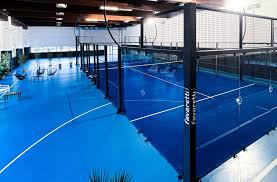

The Dynamic Duo Racquetball and Tennis
Racquetball and tennis are two popular racquet sports that have captivated players and spectators alike around the world. Both games involve a racquet and a ball, but they differ significantly in terms of their rules, court dimensions, and gameplay strategies. This article explores the similarities and differences between these two sports, highlighting their unique characteristics and their appeal to athletes of all levels.
Historical Context
Tennis has a rich history that traces back to the late 12th century in France, evolving from a game called jeu de paume. It gained popularity in England and underwent several rule changes, leading to the modern version of the game we know today. Racquetball, on the other hand, is a relatively newer sport, invented in the 1950s by Joseph Sobek in the United States. Sobek combined elements from squash and handball to create a fast-paced game that quickly grew in popularity.
Court Dimensions
One of the most striking differences between tennis and racquetball is the size and layout of their respective courts. A standard tennis court is 78 feet long and 36 feet wide for doubles play, while a racquetball court is much smaller, measuring 20 feet wide, 40 feet long, and 20 feet high. The enclosed space of a racquetball court allows for a unique dynamic of play, where players can use walls to bounce the ball in various angles, adding an additional layer of strategy and skill.
Equipment
The equipment used in tennis and racquetball also varies significantly. Tennis players utilize a larger racquet with a stringed surface, which allows for powerful serves and volleys. The tennis ball is felt-covered, making it heavier and slower compared to the rubber racquetball, which is designed for quick rebounds off the walls. Racquetball racquets are typically smaller and lighter, facilitating rapid movements and quick reactions, essential for the fast-paced nature of the game.

Gameplay and Scoring
In tennis, players serve the ball from behind the baseline into the opponent's service box, with the objective to win points by hitting shots that the opponent cannot return. Matches can be played in best-of-three or best-of-five sets, and players can score either on their serve (traditional scoring) or both players (no-ad scoring).
In contrast, racquetball is played in a more dynamic environment where players can strike the ball after it has bounced once. Points can be scored by either player when serving, and the game continues until one player fails to return the ball or hits it out of bounds. This aspect makes racquetball particularly fast-paced and exhilarating, as players constantly rally to outsmart each other within the enclosed court.
Physical and Mental Challenges
Both racquetball and tennis provide excellent cardiovascular workouts, improving agility, hand-eye coordination, and overall fitness. However, they also present unique mental challenges. Tennis players must strategize for a match that can last several hours, often requiring strong mental endurance to maintain focus and adapt to an opponent’s tactics. Racquetball players, conversely, need quick reflexes and the ability to think on their feet, given the rapid pace of the game and unpredictable ball rebounds off the walls.
The Social Aspect
Lastly, both sports foster community and camaraderie. Tennis is often played in clubs and organized leagues, while racquetball players frequently find their niche in fitness centers and community sports programs. Both sports encourage social interaction, friendly competition, and an active lifestyle, making them great choices for individuals looking to stay fit while enjoying the company of others.
In conclusion, whether you prefer the strategic plays and longer rallies of tennis or the fast-paced, wall-bouncing action of racquetball, both sports offer unique and rewarding experiences. They not only enhance physical fitness but also provide mental challenges and social opportunities, making them worthy pursuits for athletes of all ages.
Premium Paddle Tennis Rackets for Every Court & Player
Premium Padel Courts: Expert Design & Installation Services
Premium Padel Courts: Panoramic Designs & Custom Builds
Premium Padel Court | Custom Designs & Quality Installation
Paddle Tennis Rackets: Unleash Power & Precision on Court
Best Paddle Tennis Rackets: Power, Control & Comfort